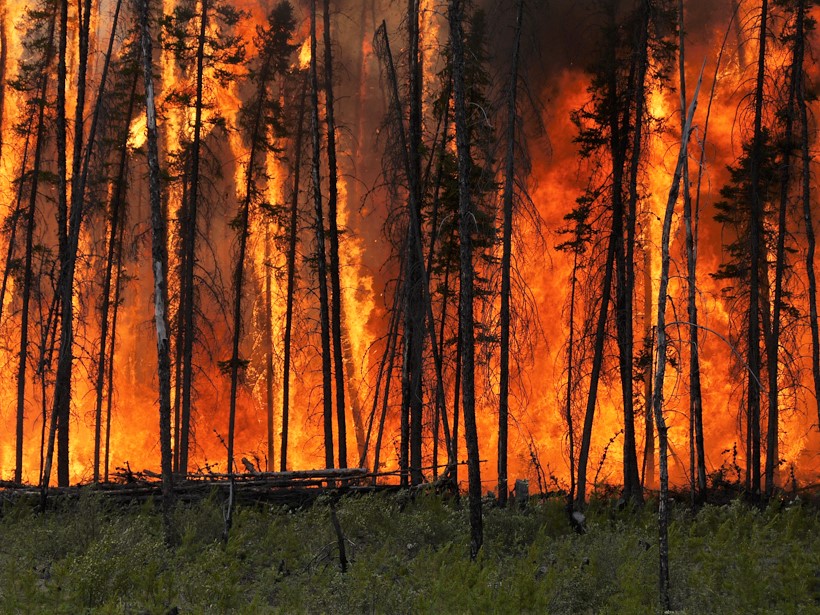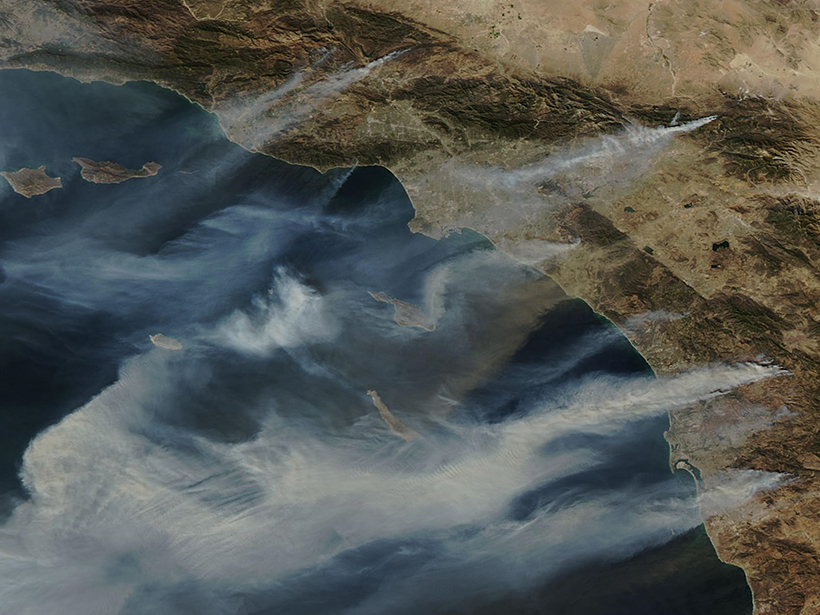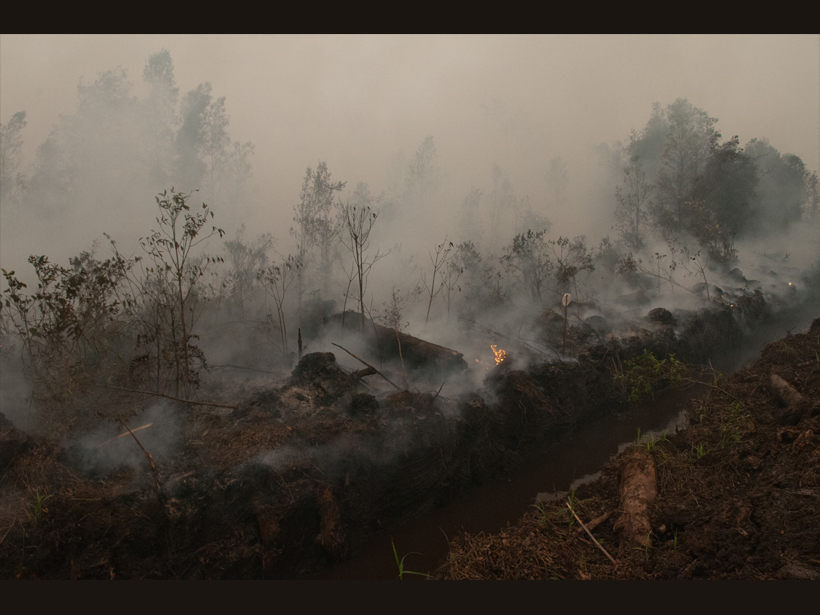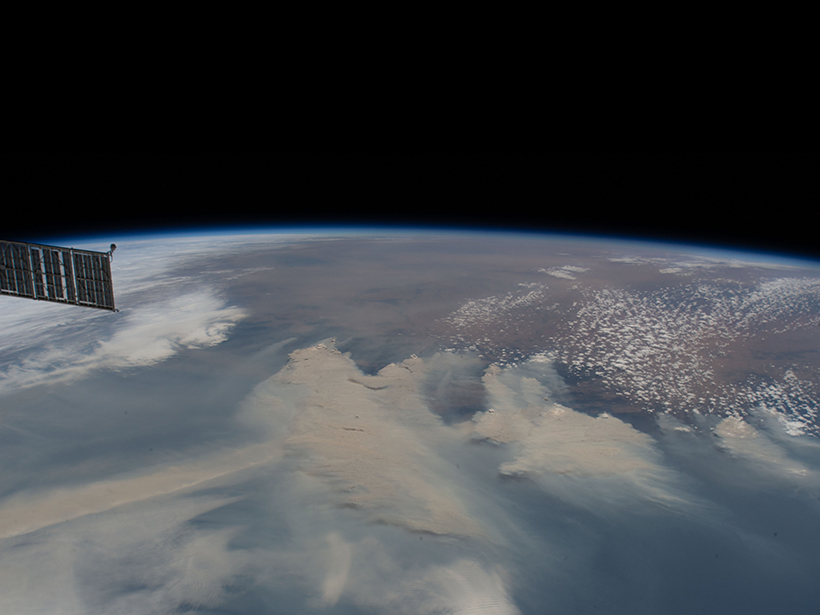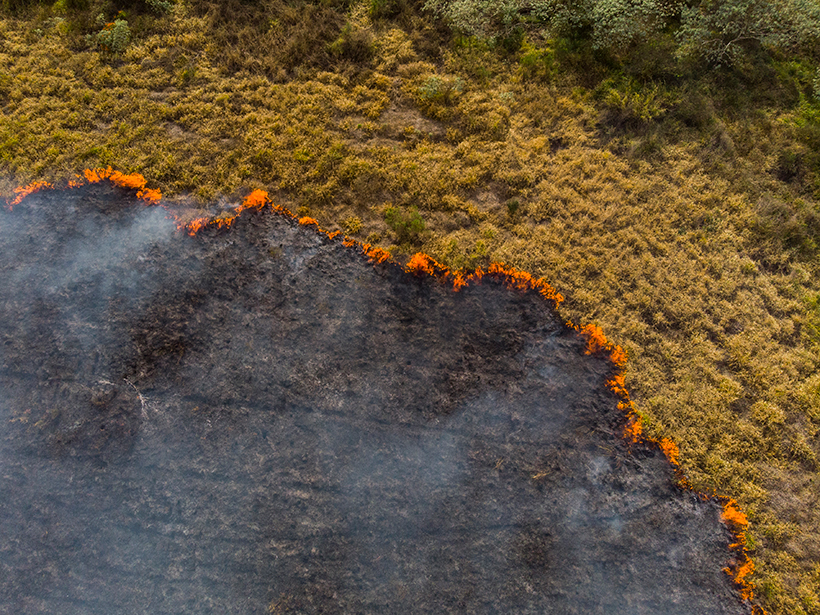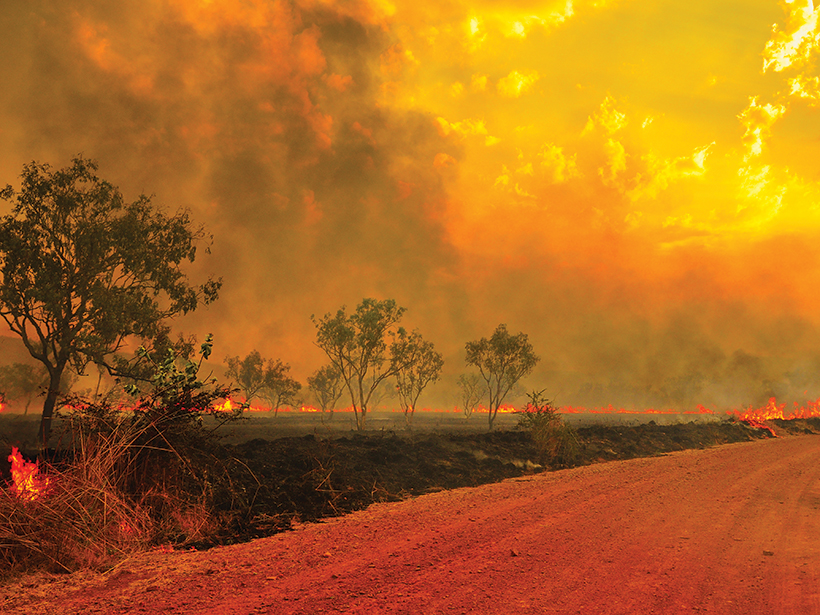An analysis of nearly 1,400 wildfires suggests that some postfire techniques used to help restore vegetation may be unnecessary.
wildfires
The Rise of Zombie Fires
Wildfires can smolder underground through Arctic winters, reigniting at the surface when conditions are right.
New Special Collection: Fire in the Earth System
Papers are invited for a new cross-journal special collection presenting advances in understanding the physical and biogeochemical processes associated with landscape fires and their impacts.
Could Wildfire Ash Feed the Ocean’s Tiniest Life-Forms?
Ash falling on the ocean after a wildfire could fuel plankton growth.
Santa Ana Winds and Wildfires Influence Air Pollution
Inhaling particulate matter is hard on human health. New research shows that Southern California’s Santa Ana winds can clear or exacerbate fine-particulate pollution depending on wildfire conditions.
Wildfire Smoke Boosts Photosynthetic Efficiency
Wildfires can destroy large tracts of vegetation. But their smoke plumes may help crops and other plants use sunlight more efficiently.
Starting (and Stopping) a Fire to Study It
Fire experiments on peatlands in Southeast Asia have identified previously unknown emissions patterns and could point to ways to detect these smoldering fires before they become too big to fight.
Where Australia’s Smoke Goes to Die
Wildfires from Down Under contribute to airborne pollution and carbon emissions—and some particulates can stay in the stratosphere for a year.
Finding Wildfire’s Fingerprint in the Atmosphere
Smoke from burning landscapes is increasingly filling the air. Eos has dedicated its February 2020 issue to the increasingly important study of wildfire emissions.
Firing Up Climate Models
Scientists are working to incorporate wildfire data into climate models, resolving hindrances related to scale, speed, and the complex feedbacks between the climate and wildfire emissions.



